FAQ
- Bolivia climbing questions
-
Mallorca island and rockclimbing
- What are main specifics of rockclimbing trip to Mallorca
- Mallorca island impressions
- Rockclimbing safety Spain
- Mallorca climbing accommodation
- What season is possible for rockclimbing in Mallorca
- Transport accessibility of climbing sectors in Mallorca
- Active vacation in Mallorca
- Saint Anthony night in Mallorca
- Peru climbing questions
- Gear reviews
-
Safety in the mountains
- How NOT to climb the summit?
- Mountain navigation
- At the limit of possibilities
- Mountain thunderstorm
- Solo ascents and mountain trips alone
- Mutual responsibility in mountaineering
- Safety illusions in the mountains - a rope
- Independent team of two
- Mountain troubles
- Psychological problems in the mountains
- Health in the mountains
-
Elbrus questions
- Elbrus climbing gear
- Climbing Elbrus with children?
- Mount Elbrus location?
- Elbrus logistics
- How to get to Mount Elbrus?
- Elbrus German airfield?
- Elbrus difficulty grade
- 5 points beginner must know about Elbrus
- How to prepare for Elbrus?
- Are there avalanches on Mount Elbrus?
- Climbing Elbrus solo?
- Seasonality of climbing Mount Elbrus
- How much time climbing Elbrus takes?
- Clothes for Mount Elbrus?
- Pressure at the top of Elbrus?
- Elbrus air temperature
- Elbrus sightseeing
- How much to climb Elbrus
- Gear questions
- Mountaineering questions
- Mountain climbing training
- Rockclimbing questions
- Horse riding tours
- Iceclimbing questions
-
Questions on the alpine programs
- What to climb in Morocco?
- Weekend summit climb
- Georgia 2023
- Pico Aneto - what is that mountain?
- Mountain programs format
- Mountain climbing food ration
- Queries on the alpine program climbing Mount Bazarduzu
- Queries on the Kamchatka alpine program climbing
- What is combined program?
- What is Sightseeing program?
- What is pilot program?
- What programs you have of the medium complexity level?
- Basic expedition rations
- Prices for the mountain climbing programs
- Queries on the Mountain Course in Adyl Su valley
- Program complexity?
- Questions about MCS AlexClimb
- Questions related to trekking programs
Technical climbing preparation
Read in Telegram in English
Leer en Telegram en Español
Spoiler: you already know everything from what is written below; it’s unlikely that anything will change, even if you read to the end!
Every time, after the end of a difficult climbing season, I promise myself – that’s it, I took a risk, that’s enough. Now I will guide old farts to Elbrus or Aconcagua or Lenin Peak. Or fat bellies to the trekking routs with donkeys. At worst - I will guide girls to Mount Kilimanjaro
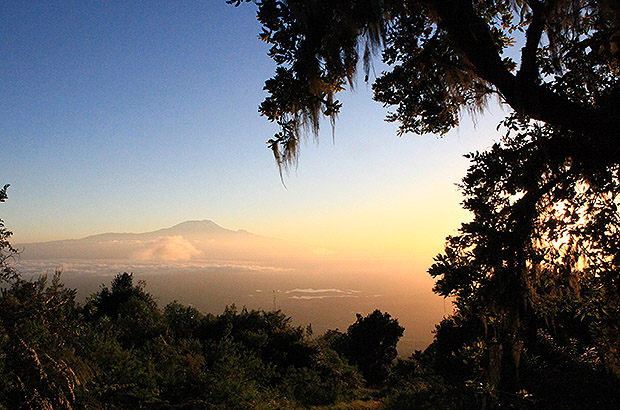
Oh dreams, dreams...
But classic is immortal just for this reason, to be relevant in all eras, forgive my French... “L’enfer est plein de bonnes volontés” (the road to hell is paved with good intentions)
And so, I again arrange the dates of climbs of Nevado Alpamayo, Mount Dykh Tau, Fitzroy and even Mount Cook in the coming season. This time without Mount Ushba, (for now), and thank God you for that.

Harsh reality
Along with questions of timing and route planning, a large number of questions come about preparing for technical alpine programs - both from participants of the past ascents, and as well from the people unknown to me yet, who are very inspired by the steep mountains.

Camp 5500 m at the foot of the Nevado Alpamayo route
It is clear to everyone that the higher the complexity of the climbing route, the higher are the associated risks that cannot be controlled in any way - avalanches, landslides, rockfalls, sudden changes in weather and the condition of the route - all these objective factors inevitably accompany any technical mountain ascent.
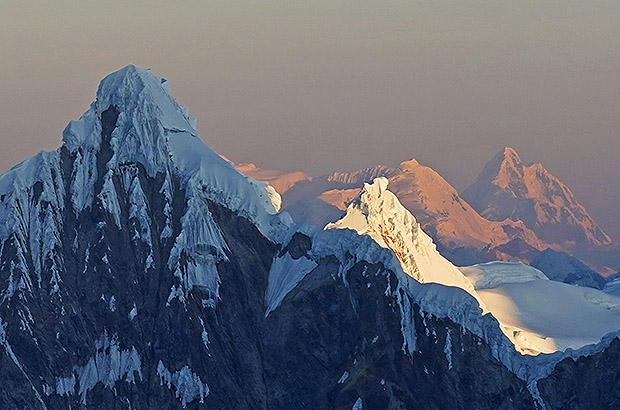
Part of the Cordillera Blanca range in Peru from Nevado Alpamayo to Nevado Huantsan
However, fails in the preparation of participants are the additional subjective factors that create serious risks for a specific participant, for a guide, or even for the entire team.
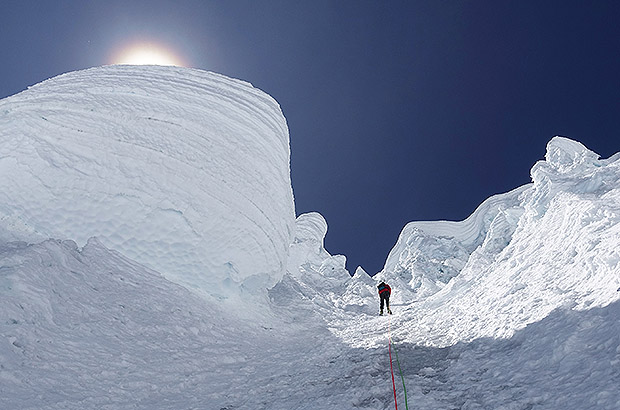
On the climbing route to the top of Nevado Alpamayo
In the mountains we play dangerous games with the elements - in order not to lose this game, we need to be very attentive and responsible even in the most insignificant, at first glance, details. Subjective risks in the mountaineering can be significantly reduced by paying enough attention to the special training.

Traverse of the North Ushba ridge
On the technical mountaineering routes, lack of dexterity, lack of balance, clumsiness, rolliness are completely unacceptable kind of “luxury”. Any awkward movement, even the slightest but unfortunate fall can lead to a hip of additional problems or even a serious emergency case.
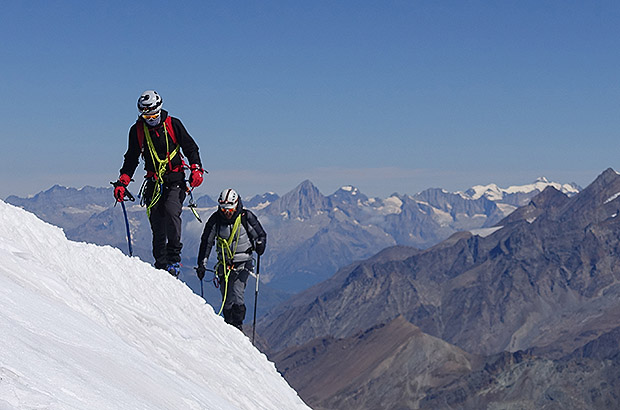
On the climbing route in the Monte Rosa massif, Switzerland
The more complex is the terrain, the higher is the complexity of the alpine route, the more important has to become your level of comprehensive training, which is not so obvious for the simple trekking routes.
General coordination, fine motor skills, dexterity. These are the qualities that make climbing mountains as safe as possible for you and your guide.
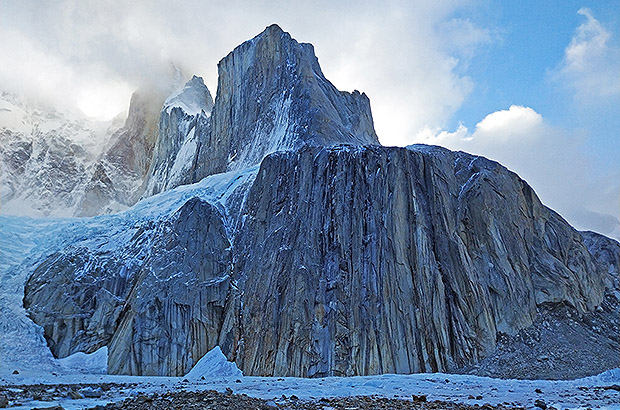
El Mocho - rock bastion at the foot of the wall of Cerro Torre, Patagonia
Of course, the climbing guide does the most part of the technical work on the route and takes the main risks. But this does not mean that any participant or client has the right to neglect his own physical form or that he is protected against unforeseen situations and the negative consequences of his own actions.
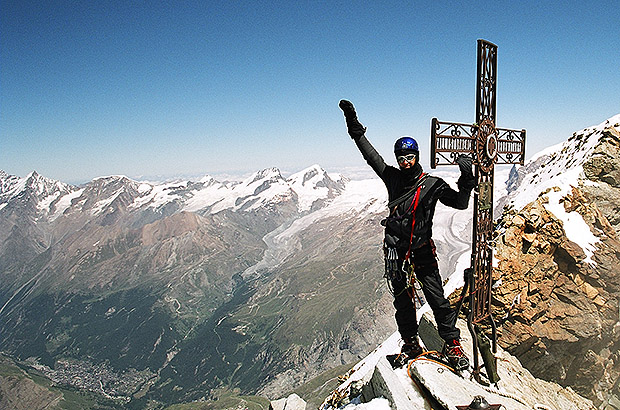
On summit of Mount Matterhorn, Switzerland - Italy
I think it’s clear to everyone that any mountaineering activity requires adequate physical fitness and energy reserves. I have already spoken more than once on the topic of general physical training and the necessary skills for climbing Mount Elbrus, Mount Kazbek, Mount Ararat, Peak Lenin, and other hiking routes.
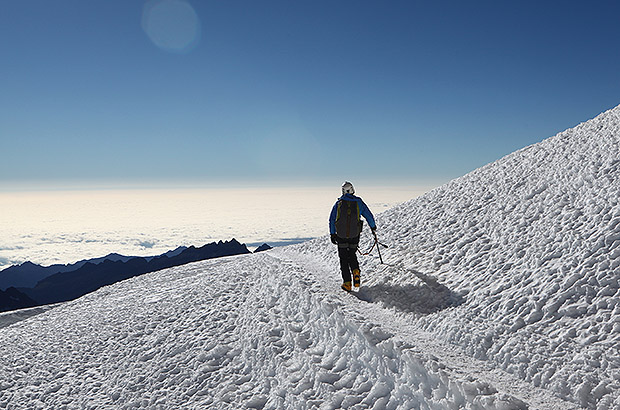
On the Huayna Potosi route in Bolivia
Continuing the topic of the mountaineering training, next I will move on to the issue of more specific preparation for climbing technical alpine routes of medium and high difficulty.
What are the specifics of training and what additional skills are needed for technical class mountaineering? What exactly needs to be developed and what could be the training programs for climbing Mount Shkhara, Mount Dykh Tau, Nevado Alpamayo, Matterhorn, Fitzroy or Ushba?

On the route to Mount Fitzroy summit in Patagonia
In the case of preparation for technical ascents, first of all, we are talking about developing and improving your coordination skills. The ability to move confidently and safely on any terrain is purely a coordination task - the better you control your body movements, the safer will be any mountain climb for you.
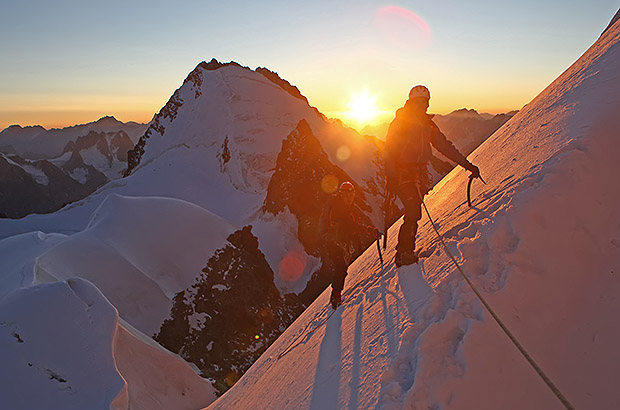
Early morning on the ridge of North Ushba
In addition, based on my (quite long) experience as a rockclimbing coach, I can say that developed coordination skills help not only in climbing the rocks or mountains. Developing dexterity and coordination also improves physical safety in many other outdoor activities.

Performing a daily calistatic set of exercises
Loss of control of movement is the most common cause of injury in the everyday life. In addition, restriction in movement and loss of coordination associated with lack of activity and an office-sedentary lifestyle are the cause of many health problems.

At the summit of Mount Ushba
Coordination and dexterity are innate skills inherent in any child. However, as we get older, many of us become bored and too lazy to maintain the level of activity required to maintain these qualities.

Too much agility combined with courage can get you in trouble
The modern concept of fitness and sports lifestyle does not always include the unobvious (at first glance) need to train not only strength or endurance, but also agility, culture of movement, balance and coordination. Perhaps this is the influence of the marketing - it is more profitable to sell “dumb power”. But in order to develop agility, you don’t need subscriptions to any expensive fitness club or complex training systems with famous coaches.
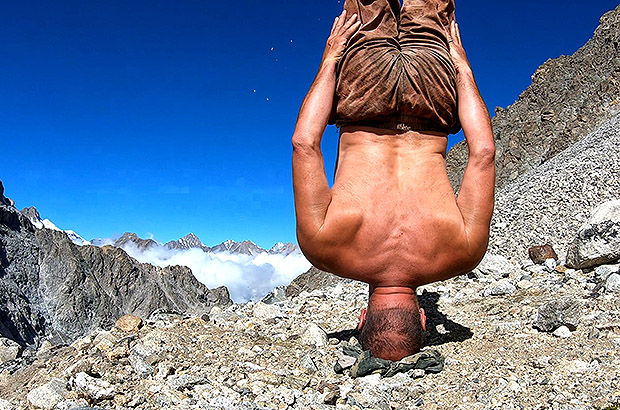
In any business, head work is the most important
The secret and difficulty of the task is that to develop dexterity you only need your own body, your personal desire, your iron patience and straight determination - you must admit, it is much easier to buy a subscription to a fitness club.
Most exercises and training programs for developing coordination do not require any additional technical devices - you train just with your own weight, this is the main simulator.
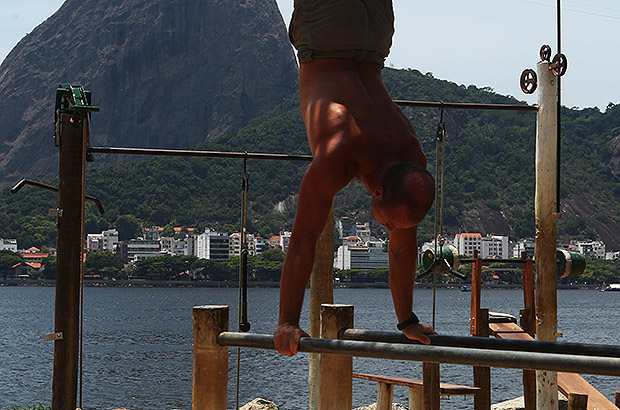
Outdoor training in Rio de Janeiro
It should be noted that any coordination skills do not come after a week or month of training. Tangible results from coordination training can be expected no earlier than after several years of regular training. However, it is advisable to include coordination training in your daily exercise routine even if you are not planning to climb any mountains. But if you have such plans, then this is vital.

Climbing Free Spain peak in the Caucasus
Below I give a list of activities, the inclusion of which in the daily sports routine will allow you to achieve the fastest results in improving your balance skills and coordination:
· Rockclimbing: as part of my MCS AlexClimb project, I have been promoting fitness rockclimbing for a very long time. For many of my followers, this form of activity is not at all associated with the mountains or mountaineering - for them it is just an exciting, relatively safe form of active leisure and excellent fitness. For many of those, rockclimbing is an unique universe, with an endless number of new horizons and achievements.

By doing rockclimbing exercises three times a day, you will solve many problems in your life. Feel pain in the back? - go climbing, your wife is gone - go climbing, fired from your job - go climbing. It is a perfect solution
However, if we talk about rockclimbing in the context of preparing for mountaineering, that should be considered exclusively in the form of fitness rockclimbing. There can be no talk of any sporting achievements - any sport sooner or later leads to injuries and occupational diseases. To avoid this in your rockclimbing, you need to follow some rules:
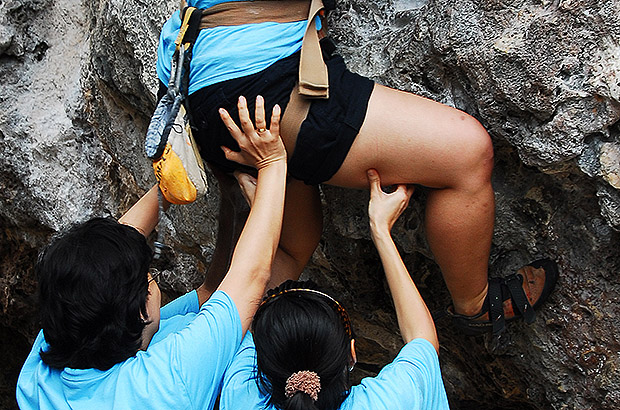
Way to success - to pull from above and push from below
1. Avoid any forms of bouldering - this is the most traumatic form of rockclimbing and is totally useless for the development of the basic coordination skills.
2. On simple rockclimbing routes, maximum attention should be paid to practicing the efficiency of each movement, without focusing on “climbing routes to the end” or increasing the route difficulty.
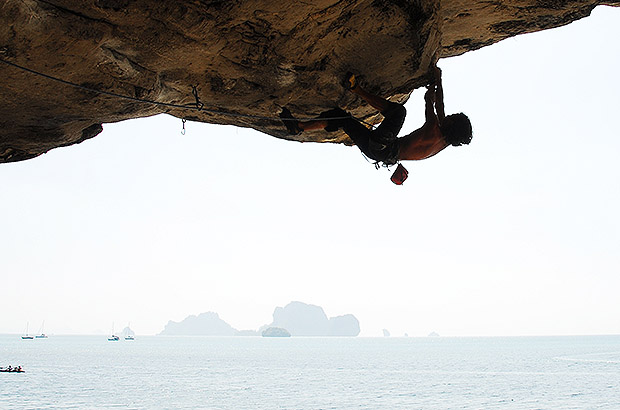
Climb the rock until you feel tired. Don't cross this level
3. You need to prioritize long simple routes, with the number of the moves 20+ - this task requires both technical and tactical solutions, optimizing the sequence of movements.
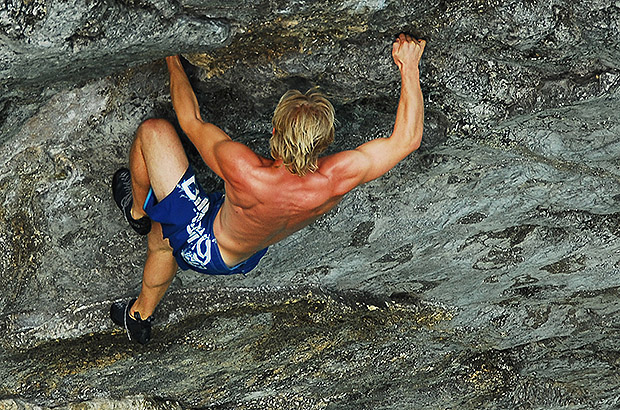
The more climbing you do per workout, the better.
4. Priority should be placed on the quantity of the routes, but not on their complexity. Ideally, increase the volume of climbing per workout to 300-400 vertical meters.

It is better to choose a rockclimbing location as far as possible from your place of work. For example in Mallorca
One of the best solutions for preparing for technical mountaineering routes is my training program on the natural terrain - in recent years I have been working with it on in Mallorca.

In our climbing training there is always a good goal to be climbed
Over the 12 days of the program, we go through three training sets of 3 intensive days of 4-5 hour climbing, which not only give participants the necessary rockclimbing techniques, but also significantly increase the level of general physical fitness.
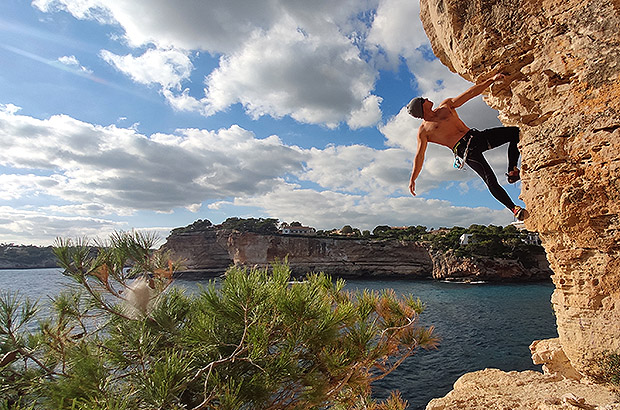
Winter rockclimbing in Mallorca - it is ideal paradise training conditions
Of course, you won’t be able to learn to rockclimb “from zero” on such a program, but in order to master the basic rockclimbing skills necessary for alpine ascent, especially in the rock class, for example, in Patagonia, this solution is more than enough.
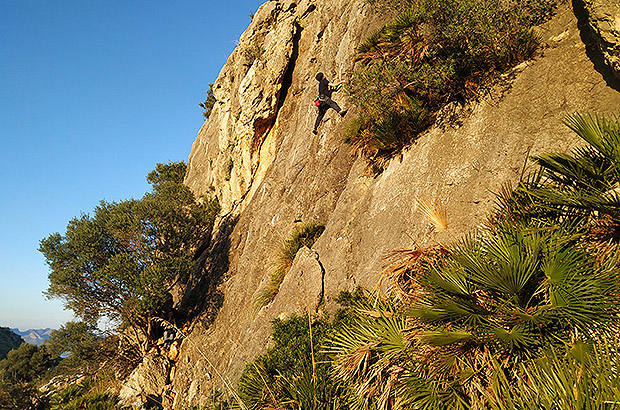
Rockclimbing training in Mallorca
The total volume of physical load that participants receive during the rockclimbing program in Mallorca is so high that this impulse is enough to maintain high tone for the next 6-8 months.
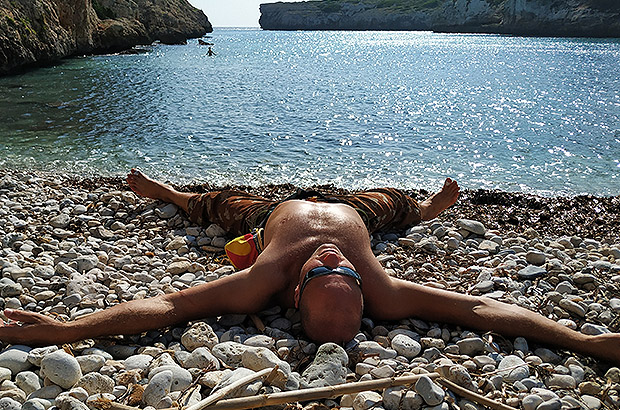
Understanding the basics of rockclimbing is especially effective when listening to the sound of the surf.
Combining a rockclimbing program with the iceclimbing program from the next paragraph is an ideal solution for preparing for any mountain ascents of medium and high difficulty categories.
· Ice Climbing: The climbing goals and objectives of iceclimbing training are not that much different from those of rockclimbing training. Iceclimbing technique is very similar to rockclimbing one, built more on coordination, with the exception of some purely technical elements and more aggressive external factors.
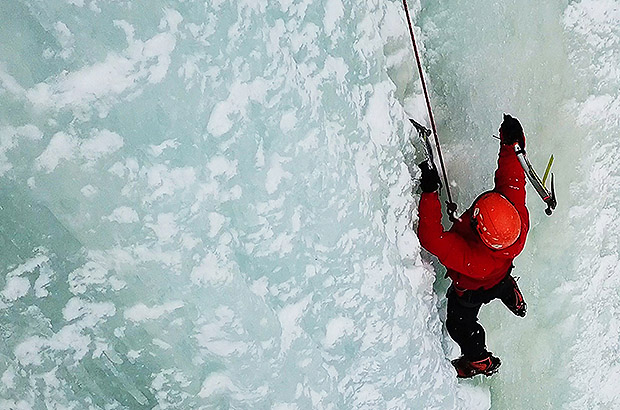
Iceclimbing training on the blue ice of frozen waterfalls in Norway
Intensive iceclimbing training perfectly prepares participants for the conditions of serious mountaineering routes. If it is necessary to prepare for ascents of a snow-ice or combined class, it is the iceclimbing training program that solves most problems of both a technical nature and issues of general physical training.
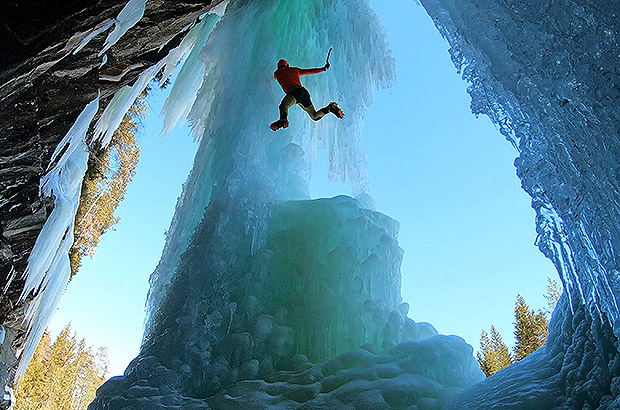
Iceclimbing develops the same technical skills as rockclimbing, but the emphasis in iceclimbing is more on the physical fitness
In this segment, my iceclimbing training program in Norway, for more than 10 years, has proven itself to be an ideal solution for preparing for ascents of Mount Ushba, Mount Dykh Tau, Mount Shkhara, Mount Matterhorn / Cervino, Mount Cook, Nevado Alpamayo and other routes of this level in the combined or snow-ice class. The principle, schedule and methodology of the program are similar to the Mallorca rockclimbing program described above.
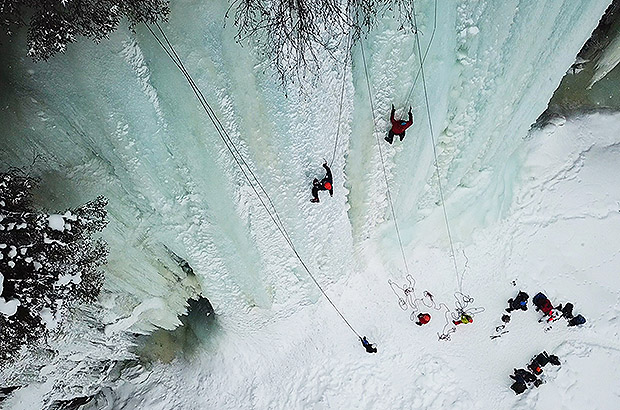
During an iceclimbing training program in Norway
As a nice addition to iceclimbing, our Norwegian program includes optional cross-country skiing and ski touring training. By the way, these types of winter activities are an ideal solution to the general physical training of mountain climbers.
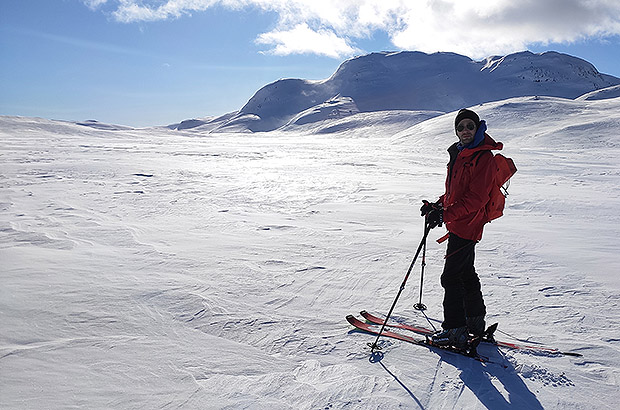
Norway is a paradise for all variations of cross country and alpine skiing. The photo shows our ski touring trip on a day off from iceclimbing. Hemsedal region
· Calistatics. A trendy direction in the fitness industry today, in which exclusively the weight and dimensions of your own body are used to achieve results. The idea of calistatic fitness is that to develop the basic motor functions of the body. No equipment, no weights, no special exercise or premises are required - ideally, a flat floor, horizontal bar and parallel bars are sufficient.
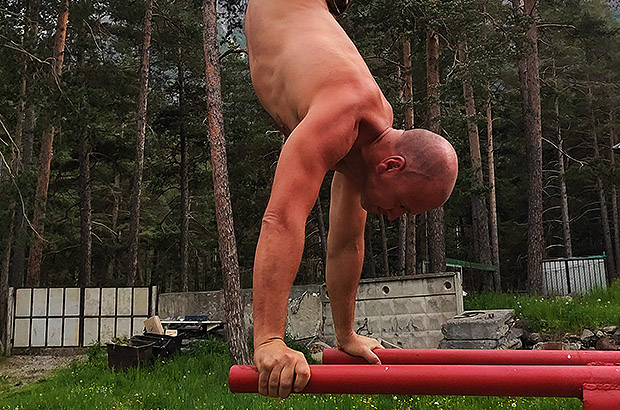
Calistatic training can be carried out in any location
Even before the term “calistatics” appeared, I taught this ideology for many years - both rock and iceclimbing fit perfectly into it. That activities completely built on the coordination capabilities of our body. By its nature, rockclimbing is one of the ideal forms of calistatics - a set of coordination tasks built on the realization of the capabilities of our body.
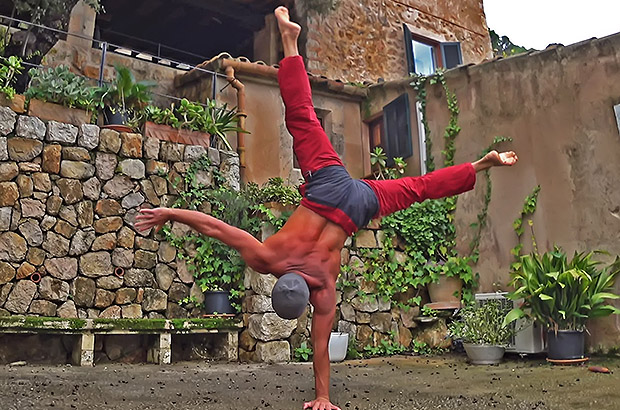
A flat courtyard is an ideal gym for performing a set of calistatic exercises
In its generally accepted format, calistatics includes many exercises related to working with your own body weight. The most basic effective training complexes can consist of various combinations of push-ups, pull-ups and squats - the load is regulated by the number of repetitions and intensity.
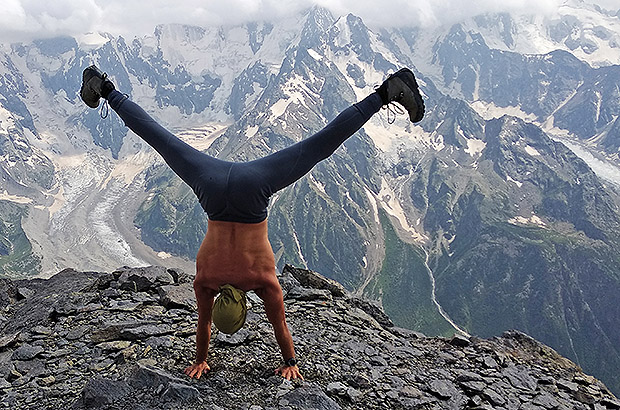
A set of calistatic exercises can consist of two or three static positions with power transitions - that is enough to be able to do sports at any time and anywhere!
· Yoga. In the format of static gymnastics, yoga largely corresponds to calistatic complexes and helps to develop static and dynamic balance.

The advantage of yoga is that you can take your favorite poses and positions at any time, in any location.
· Capoeira. As a dynamic gymnastics format, it allows you to practice numerous complex combinations of movements that require high coordination, strength and endurance.

Like any calistatics, capoeira training can be carried out in any location you like
Capoeira combines the flexibility and coordination of choreography with the intensity of martial arts. In the absence of physical contact with a partner - contact sparring - capoeira is an excellent form of coordination training.

Capoeira
· Gymnastics. In the fitness form that is a great way to gain confident coordination skills and strength endurance. Straight limitation – upon getting to the sports phase, it becomes highly dangerous for injuries.
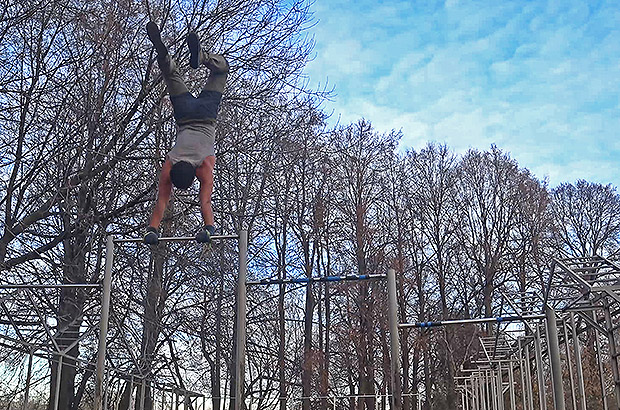
Doing gymnastics exercises especially is useful in the fresh air
· Choreography. Any dance perfectly develops the ability to control your body and coordinate during complex combinations of movements. In its intensive format - it is an excellent coordination training.

Dancing in the foam of the surf - beautiful, but useless for climbing
However, in most cases, choreography does not provide enough intensity to train endurance or strength qualities. In this regard, it significantly loses to the above mentioned types of activities. Although, this does not apply to specific types of choreography - acrobatic rock and roll, low break, etc., which are more related to the category of acrobatics and artistic gymnastics, including in terms of the level of injury risk.

Yes, this is also dancing
· Slackline and balance board. These rather exotic and little-known (outside the climbing and acrobatic audience) devices do not yet claim the position of individual sports.
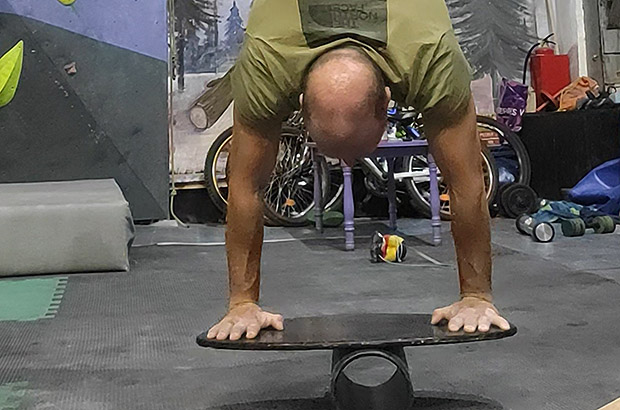
Balance boards have long appeared on most climbing walls as an additional balance exercise device.
Although, each of them has already developed very serious sets of tricks and training methods, with enormous development potential.
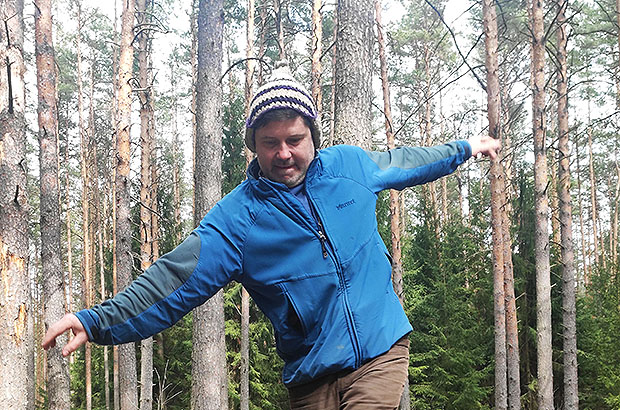
Training on a slackline helps to return to the sports even to the most hopeless lazy people and alcoholics
In my opinion, these difficult-to-use simulators, which ideally develop coordination and motor skills, should become inseparable companions for any individual inclined to adventure, rockclimbing and mountaineering. There is a certain risk of injury when practicing on a slackline or balance board, but the benefits certainly justify the risks.
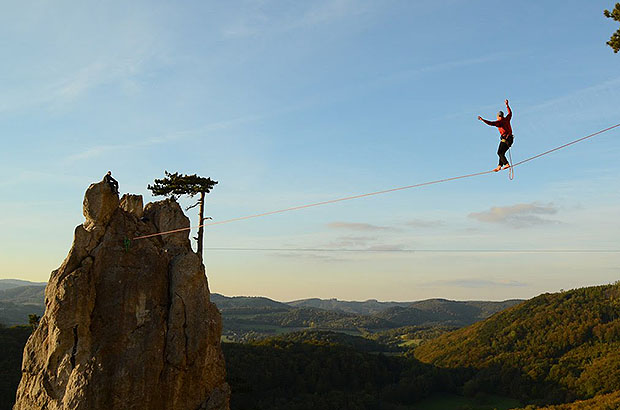
A morning walk on the slackline is even more invigorating than a cup of coffee.
What should not be avoided (or even totally eliminated) when preparing for technical mountaineering ascents.
1. First of all – bouldering. I have nothing against this type of rockclimbing (I myself started my rockclimbing career with bouldering). However, when practicing bouldering, the emphasis is put solely on the strength and movement dynamics, technique in bouldering is on the third place of importance, and it is not customary to think about tactics when climbing short difficult bouldering routes.

Regardless of the difficulty, bouldering involves numerous and often unsuccessful falls.
Unfortunately, these qualities are completely useless for solving the problem we are discussing here - preparing for technical mountaineering. But the most important thing is not even this. When practicing bouldering, the likelihood of injury is extremely high - due to the characteristics of this type of rockclimbing: a low level of control over movement combined with a large number of uncontrolled falls. In the process of practicing this dynamic and very exciting type of rockclimbing, you can bury your mountaineering plans - under a thick layer of plaster. Having received any of the most common injuries in bouldering - a broken ankle or elbow joint.

Definitely such thing would not be the best gift for your upcoming mountain season
2. Running. Now I will make a provocative statement. If you lack physical fitness, then you need to prepare not for the technical climbing routes, but should to improve your general shape - lose weight, gain energy. For the easy climbs, your fitness should be sufficient to run 10-15 kilometers easily without dying for a week afterwards.
The nuance is that, unless you are a professional track and field athlete or marathon runner, starting to run 10s km at the age of 35+ means that in a fairly short time you will get serious problems with your knee joints.
A much better solution would be regular ski training (there is no impact load on the knee joint), or alternative solutions of the anaerobic training - swimming, Nordic walking etc.
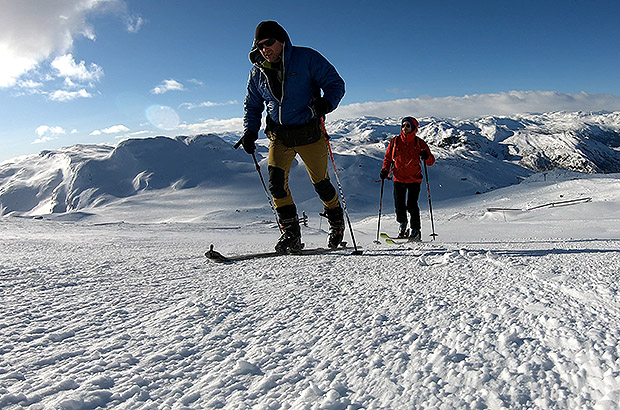
Quit smoking, start skiing!
Knees that is a limited resource that can be quickly used up during intense running workouts. If you plan to enjoy hiking and climbing in the mountains and other outdoor activities for a long time, it is better not to forget the simple folk wisdom: for those who have been running all year, forgetting about laziness, let Santa Claus bring new knees... Unfortunately, this truth has recently become available to many.
3. Football, volleyball, basketball, tennis, etc. – in my opinion, these play activities cannot be considered as forms of healthy fitness at all. All this biased running after the ball has a distant relation to the sports. In its professional form, this is a well-orchestrated commercial show, and at an amateur level, it is a direct and inevitable road to the hospital with broken fingers, dislocations, torn ligaments or meniscus.
Let me summarize this rather long text: if you plan to take part in any alpine climb or mountain expedition of a technical class in the foreseeable future, your direct responsibility is to soberly assess your capabilities, identify shortcomings and pay due attention to the special preparation.
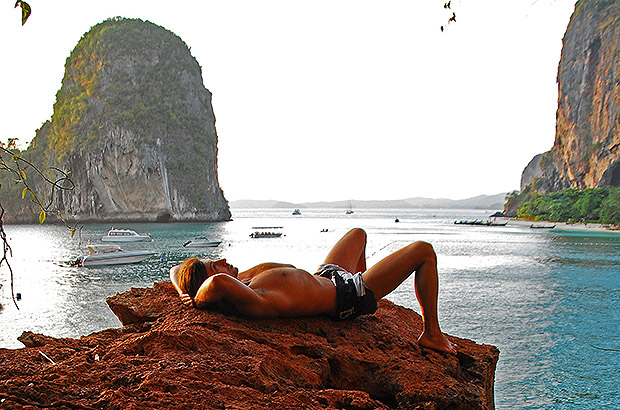
Probably assessing your capabilities will influence your future climbing plans
To do this, it is enough to include any of the activities recommended above in your training schedule in advance, compose and increase the density of training in case of a lack of coordination skills. And do all this earlier than two weeks before leaving for the mountains.
The author of the text and photos - Alex Trubachev
Your mountaineering and rockclimbing guide in Argentina, Peru and Bolivia
MCS EDIT 2023
Our Principles
AlexClimb Rule #1 - Safety First
From the very beginning of our activity, here nearly 16 years, the first Principle of work of School of mountaineering and rock-climbing of MCS AlexClimb is the Safety Priority. On the basis of this Principle all process of training is based, all programs and rounds are developed and carried out only within this main principle. We consider that at professional approach to development of programs, at personal discipline and correctly put motivation - occupations by mountaineering and rock-climbing are COMPLETELY safe. And from the return - all troubles and accidents in our sport come from nonprofessionalism, from ignorance or neglect by elementary standards of safety, from irrational motivation, from revaluation of own forces and opportunities. All these prerequisites we COMPLETELY EXCLUDE in our work - ours Rock-climbing, Ice climbing and Mountaineering are based on one Principle - the Safety Priority. In rock-climbing, mountaineering and ice climbing, the Priority of Safety of MCS AlexClimb-is your personal security and comfort irrespective of, than we are engaged - we train muscles and we work technology of the movement in the sports hall and on the rock climbing wall, we make the way through snowstorm to top or we relax on golden sand of the Caribbean beach after hot day of trainings on rocks. The Safety priority - the main credo of School of mountaineering and rock-climbing of MCS AlexClimb.
AlexClimb Rule #2 - Leave No Trace
Closely interacting with Nature, working with the active programs in mountains, woods, lakes and rivers, we perfectly understand the importance of carefull and respectfull bahavior towards the Nature, for its resources. From the very beginning of our outdoor-activity we adopted rules of Leave No Trace technique - the standard of behavior of the person accepted in all the civilized world in relation to environment and especially - to the wild nature. After all on the relation of people to the nature near which they exist, itself can draw dalekoidushchy conclusions on the relation of these people to... Where and as we didn't travel - we don't reserve any garbage, we try to reduce whenever possible our influence on environment to a minimum. We clear earlier zagryazyonny tourist parking of the left garbage, we take out and we take out to utilization places that to us other people left there. We consider that only thus, at personal individual consciousness of each citizen, each tourist, climber or autotraveller, we will be able to keep the nature surrounding us in its state, natural, suitable for life, - in it pledge of the healthy future for ourselves and our children.





